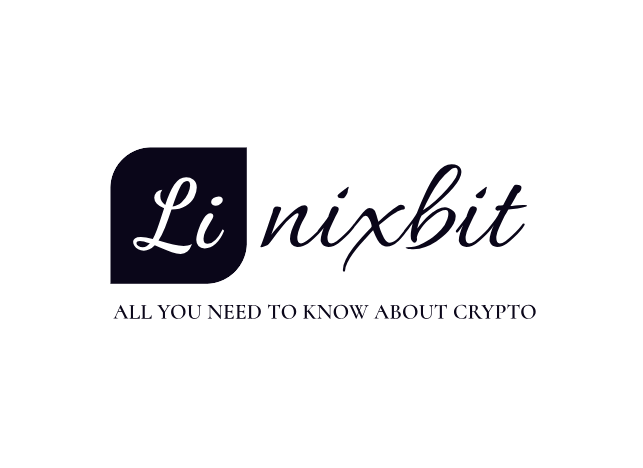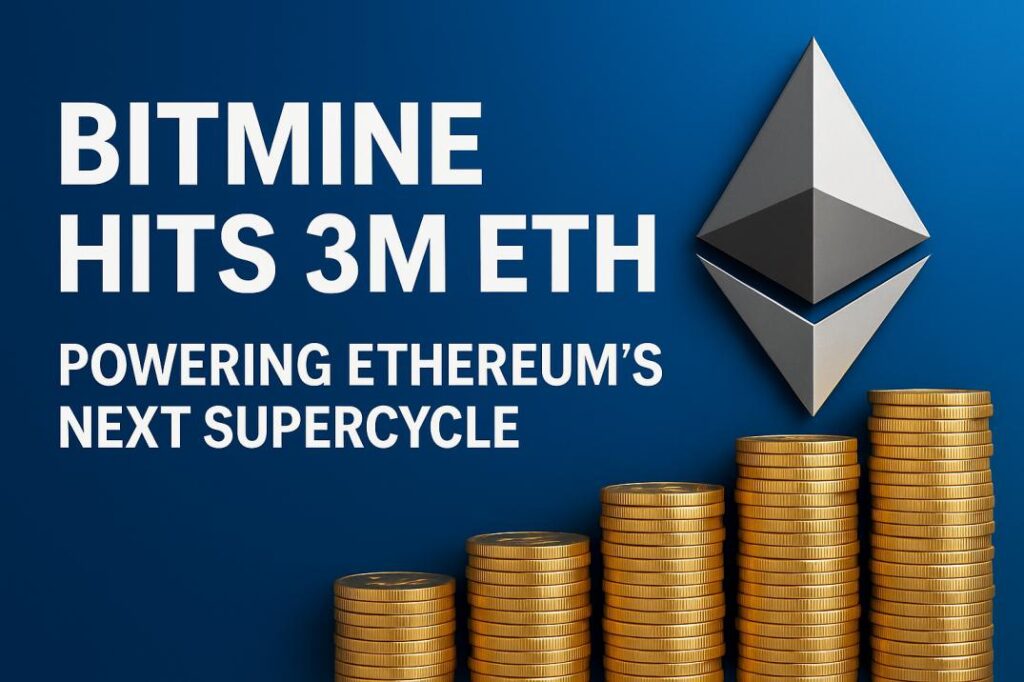BitMine has made history in the crypto sphere, claiming 3.03 million Ether (ETH) and taking a 2.5% share of Ethereum’s total supply. BitMine Ethereum accumulation is a new milestone in the company’s growth, not simply as an investor but as a structural backer of Ethereum itself. In a bear market season when investors are spooked by volatility and shifting macro winds, BitMine’s Ethereum buying spree is a strong endorsement of the long-term fundamentals of the world’s leading smart contract blockchain.
Per its 13 October 2025 press release, BitMine Immersion Technologies purchased 202,037 ETH during the recent sell-off to become a major ETH buyer. It increased its ETH holdings past the 3 million ETH threshold, while working toward its stated goal of owning 5% of all Ethereum in existence. In a bullish signal, BitMine’s Chairman Thomas “Tom” Lee framed the accumulation as “buying the future at a discount”, citing a belief in Ethereum’s long-term “supercycle” in which AI integration and Wall Street adoption of blockchain technology continue.
BitMine Continues to Break Records by Crossing 3 Million ETH on Its Path to 5%
Currently, the amount of Ethereum on BitMine’s balance sheet amounts to about 2.5% of Ethereum’s circulating supply, making BitMine one of the largest single institutional holders in the Ethereum ecosystem. In order to achieve the company’s stated goal of eventually owning 5% of Ethereum’s total supply, BitMine will need to buy an additional 3 million ETH. Given the decentralized nature of Ethereum and the market share influence of institutional buying and on-chain analytics, BitMine’s goal is no small feat.
The expansion comes during a season of increased volatility and sell-offs throughout the broader crypto market. Bitcoin’s momentum has been slowing amid macro headwinds, but BitMine has doubled down on Ethereum as the infrastructure for the next phase of decentralized computing and tokenized finance. “Volatility is a feature, not a flaw,” says Tom Lee. “It creates dislocations—discounts to the future—that disciplined investors can take advantage of.”
For BitMine, those dislocations have taken the form of steadily increasing treasury reserves that now position the firm among the largest corporate Ethereum holders in history. BitMine’s balance sheet now reflects a high-conviction, long-term investment thesis on Ethereum in a similar league to that of other major institutional holders like ARK Invest, Founders Fund, Pantera Capital, and Galaxy Digital.
A Roster of Heavyweights Back BitMine
Behind BitMine’s Ethereum accumulation is a roster of heavyweights that view Ethereum as the digital infrastructure of tomorrow’s global financial system. The firm’s shareholder base includes an A-list of institutional crypto bulls: ARK Invest and Cathie Wood’s vision of DeFi-led decentralized AI, Founders Fund (co-founded by Peter Thiel) known for long-term, disruptive “innovator’s bets”, and Pantera Capital, one of the first major funds in blockchain venture investing.
This list of high-profile backers gives BitMine both the financial wherewithal and the reputational leverage to signal to traditional investors that Ethereum is not merely a speculative asset but an emerging utility. As one of Ethereum’s largest corporate supporters and largest corporate ETH holders, BitMine effectively becomes a proxy for investors to gain access to Ethereum’s long-term growth thesis.
BitMine’s portfolio also factors into its reputation. In addition to ETH, BitMine’s assets include 192 Bitcoin, $104 million in unencumbered cash, and $135 million in “moonshot” equity, most of it in Eightco Holdings. BitMine’s total crypto and equity holdings in cash or liquid markets are worth between $12.9 billion and $13.4 billion.
BitMine Goes from Miner to Market Mover
BitMine first became known in crypto as a “next-generation” mining and immersion cooling operation, but its evolution into a macro crypto player suggests an industry that has moved toward the middle, beyond niche crypto-only operations. BitMine’s daily stock trading volume has increased significantly, now hovering around $3.5 billion and placing the company in the top 25 most actively traded U.S. equities by Fundstrat data. It’s this kind of liquidity and market exposure that allows BitMine to also act as a market indicator and institutional attractor.
In this sense, BitMine has become a bridge between the traditional finance world and decentralized assets. BitMine’s Ethereum accumulation is not merely an asset allocation move but an act of conviction in Ethereum as the settlement layer for a whole world of tokenized assets, decentralized finance, and AI-native applications. For retail and institutional investors looking for ways to get indirect exposure to ETH without actually holding the token, BitMine’s new trajectory offers a regulated, equity-based alternative.
BitMine’s Path to 5% Is Long but Clear
Crossing the 3 million ETH threshold is one thing, but BitMine has also stated its long-term goal of owning 5% of Ethereum. It’s a goal that not only redefines ambition but also requires billions of dollars in additional capital and a consistent, non-disruptive buy-side strategy. BitMine’s institutional support provides the financial runway and the reputation to pull this off over a long enough time horizon.
Industry analysts point to BitMine Ethereum accumulation having broader market effects. With more Ether locked up in corporate treasuries and long-term investors, total circulating supply gets taken up, creating potential for upward price pressure in the face of growing demand. There are also bigger-picture governance implications: a single corporate entity controlling a high percentage of the supply changes the conversation around decentralization and protocol-level influence.
BitMine’s approach mirrors that of early Bitcoin corporate treasuries like MicroStrategy: using balance sheet reserves to acquire underpriced crypto assets. In Ethereum’s case, the story has greater significance given Ethereum’s maturing position in the ecosystem for decentralized AI, staking economies, and layer-2 rollup scaling.
Tom Lee sees Ethereum in a Supercycle
Chairman Tom Lee’s own “Supercycle” thesis is part of a growing chorus that sees Ethereum’s utility expansion into smart contracts, rollups, and on-chain AI as a structural inflection point. As decentralized computation goes mainstream and converges with traditional markets, Ethereum’s scope grows beyond DeFi and NFTs, with potential use cases expanding to powering tokenized stocks and bonds, AI models, and machine-to-machine payments.
In that regard, BitMine’s Ethereum accumulation strategy becomes less about speculation and more about being in a position to profit from a digital infrastructure revolution. Just as cloud computing companies have become the foundation of Web2, Ethereum could be the underlying base for the next era of programmable assets and BitMine wants its slice of the pie.


